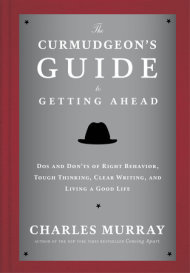The next in a continuing, intermittent series of Jay Trachman treasures:
Being by The Book always bends me back toward basics. (Too bad alliteration isn't one of them...)
Here are the most basic basics of all, in brief...
1) Talk to someone. Not your target demographic; not a picture on the wall or a cardboard cut-out. Certainly not "the great unwashed." I mean a specific individual whom you can count on to enjoy your company. An individual; someone you know, or wish you knew. Someone with a name, a height and weight, an occupation, a history, relationships and feelings.
Intimacy is one of the last few remaining strengths of radio. If we blow it, there isn't much standing between us and iPods, Sirius and all the others we keep trying not to worry about.
Consider: our music isn't as good as what a real music lover can program for him or herself on an MP3 player. Even if it is -- even if a listener likes the mix we offer or is too lazy to "shuffle" his or her own iPod, the great odds are your music isn't discernable from half a dozen other stations in the market. The hottest hits, the longest sweeps, the fewest interruptions -- these are mechanical functions that your competition can duplicate successfully, and probably will. Seems like a hard way to win in the ratings.
Our news credibility has been pre-empted by (the internet and) TV; unless a boob tube isn't available, that's what most people choose for their primary information source these days. The weather: decades of inaccurate forecasts have left serious questions about whether anybody believes them now.
All that's left, besides our local-ness, is our intimacy -- the companionship we provide -- our ability to reach a listener and make him or her feel like they're not alone. As far as I know, in order to achieve that, you *must* be convinced you're really talking to someone.
2) Have something to say. So obvious. So elusive. Personality radio isn't in trouble because the DJ's talked too much; it's in trouble because we said too little that was worth hearing. Talk about your community, this day, your listener's life and your own. How are you going to sound intimate and real if you never ever Share something real from your own life with your friend, the listener? If all your raps have the same inflection, and you never express a true feeling?
3) Here's the most basic of basic principals for personality jocks, so obvious it shouldn't need to be said: TIME MATTERS.
Put it on the bulletin board. Tape it to the wall in the control room. My experience is, there's probably nothing that needs to be said *more* to today's personality jocks.
Time matters! You are a guest in peoples' minds. Don't abuse the privilege! Prep your raps. Make them lean and mean. Remember that your listener, fan that he/she may be, still only has perhaps twenty or thirty seconds to devote his mind to you. If you haven't hooked him by then, you're just blowin' smoke.
4) Stop when you're done. Painfully obvious, again. Every rap ends with a "pay-off" - a punchline or emotional response. It's the one line in a rap that practically needs to be scripted, so you can get it just right. And, so you'll know where you're headed before you even start.
When you get there, you're done! Bam, into the next event! Either the rap has worked at this point, or it never will. There is nothing more you can do, except to establish yourself as insecure and undisciplined. Another thing you don't do is go into another piece of talk -- if you can humanly avoid it. The "one thought per break" rule is as valid today as ever. You can't observe it all the time, but when you violate it, you should have good reason for doing so.
The rules of formatics are often complex; but once you've mastered them, that's all there is, cut & dried. You follow them, execute them, and with any luck, they rarely require much thought. The rules of effective personality radio, on the other hand, are wonderfully simple. Except, the application can take a lifetime...
















